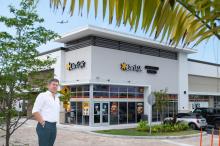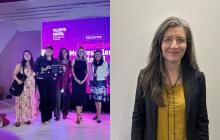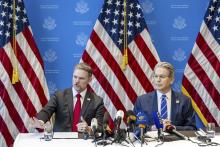The app is present in more than 888 cities in 48 countries under the disruptive model of allowing customers to negotiate the price of their rides with drivers.
One day in 2012, in the Siberian city of Yakutsk, temperatures reached an extreme low of -45 degrees Celsius, and local taxi companies decided to raise their prices at the same time. They wanted to make more money, and as expected, their regular customers protested.
It didn't take long for a group of university students, who owned their own cars, to create a social media profile. They posted messages like, "I want to get from point A to B and I'm willing to pay this amount," and little by little, they began to channel their discontent over the taxi agreement.
Led by entrepreneur Arsen Tomsky, the service quickly reached over 50,000 people in this Russian city. The following year, the model evolved into an app called inDrive, a ride-hailing service, which has expanded to 888 cities in 48 countries.
Under the banner of "direct negotiation"—allowing passengers to negotiate the price of their rides with drivers—inDrive was the second most downloaded ride-hailing app worldwide in 2024, ahead of DiDi and Bolt. Tomsky says the essence of his idea is closely tied to the circumstances:
"When you start a business in a small city, without access to investment, external support, or much available talent, you have to create a different strategy," inDrive's CEO told AméricaEconomía during his visit to Lima, Peru.
Tomsky points out that inDrive focuses on offering "real value," based on the premise that large ride-hailing companies typically enter a new market with very low prices and commissions, just to gain market share. But this is temporary: once they gain a dominant position, whether a monopoly or duopoly, they begin to raise prices and commissions, which harms users.
“To keep these prices artificially low at the beginning, these companies must pay huge incentives to drivers. But they then make up for it by raising commissions. For example, in some US states, competitors charge up to 60%. We believe this model is unfair,” Tomsky adds.
Consequently, inDrive seeks to present itself as a "simple and transparent" option, where not only the passenger sets the price, but low commissions of between 10 and 12% are charged.
Tomsky claims this is the "secret recipe" for building a global network without massive investments. "Uber has invested more than US$24 billion, we've invested about 50 times less," the executive concludes. At the same time, inDrive's pitch focuses on "challenging social injustice," a rhetoric that centers on aspects such as "treating drivers like entrepreneurs" and expanding its range of services to include freight and personal loans.
“We want to positively impact the lives of at least one billion people by 2030, whether through our business or our nonprofit initiatives. And that commitment is evident in every detail. For example, we let drivers know their passenger's destination before accepting a ride. We want to treat them like entrepreneurs, not semi-robots,” Tomsky explains.









